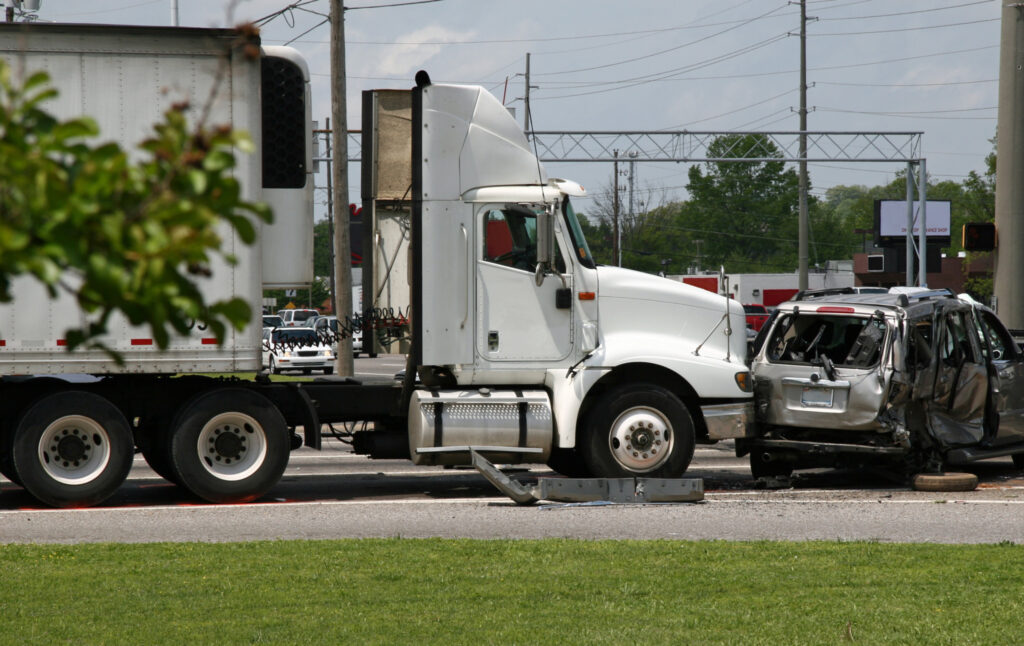How to avoid nuclear verdicts
The best way to avoid a nuclear verdict – a term used generally to describe court judgements in excess of $10 million – is to stay out of the deposition chair in the first place.
That was the message from Lisa Arseneau, trucking specialist with Staebler Insurance, who spoke as part of a panel on the topic during a webinar March 24.
“Robust safety and operational practices are essential,” she said. “If you have weak hiring processes, you’re going to be at the mercy of a plaintiff lawyer and he’s going to find that. If you have robust hiring processes and weak follow-through, anything you are weak at is where they are going to go.”
Nuclear verdicts against trucking companies are rapidly growing, and the issue was even recently picked up by the mainstream media. On March 24, CNBC published an article titled Rise in ‘nuclear verdicts’ in lawsuits threatens trucking industry.
It cited data from the American Transportation Research Institute that showed when considering verdicts of more than US$1 million, the average size increased nearly 1,000% from 2010 to 2018, from $2.3 million to $22.3 million.
“It has changed the way everyone looks at lawsuits. Lawsuits have become lotteries,” John Oldfield, client executive with insurer NFP said of the first nuclear verdicts. And the trend isn’t a U.S.-only phenomenon, enormous verdicts are being awarded in Canada as well.
Oldfield cautions that when a fleet is involved in a crash, it won’t only be scrutinized over the event itself, but its entire operation will be assessed for weakness. He recommends benchmarking against best-in-class fleets to determine how your company will be viewed by a plaintiff attorney.
“Mission statements don’t cut it,” Oldfield said. “Your company’s operations need to be benchmarked against the rest of the trucking industry.”
Hiring practices are among the areas that should be benchmarked. Scott Rea, president of AvatarFleet, which sponsored the webinar, said screening should be automated where possible. It also needs to be a simple process so drivers aren’t deterred from applying.
“If it’s hard to apply you can wave bye-bye to your drivers,” he said.
Oldfield added the recruiting process today should not look like it did 20 years ago.
“The modern method of recruiting drivers, onboarding, training, and managing them is all knew and if you haven’t radicalized the way you manage that, your benchmark rate is low and your ability to defend yourself in the court of law is reduced significantly,” he said.
Drivers should be requalified annually, abstracts pulled quarterly, and criminal background checks conducted yearly, he said. The cost of doing this is about $75-$80 per year, so it’s a small investment with a potentially huge payback.
All this must be documented. Rea said a client in North Carolina has stacks of documentation organized and ready to present in the event of an incident.

“He will give [a plaintiff lawyer] a stack of documents this high and say, ‘Pick on someone else. I’m locked and loaded. I have everything in place.’ That’s the offense we need to be taking,” Rea said.
Arseneau gives trucking clients stickers or buttons declaring ‘We A.R.E.’ It stands for ‘We are Audit-Ready Everyday.’
“Are you?” she asked fleet reps attending the webinar. “You should never play catch-up and never be doing audit prep when you get the audit notice.”
Because resources are stretched thin at the various state, provincial and federal departments of transportation, Oldfield said insurers are becoming enforcement agencies out of necessity.
“Insurance companies have become the regulators,” he said. “That wasn’t the way it was supposed to work out.”
However, he said with enforcement resources stretched tight, and insurers bearing the financial burden of poor-performing fleets, they’ve had to become more proactive in ensuring their clients are properly managing risk.
When visiting a fleet, Arseneau gets a read on its safety culture first through in-person interviews. Are her questions answered confidently and consistently, or do policies and guides have to be referenced?
“These are your tells,” she said. Next, she asks for documentation of what the fleet tells her it does. “If it’s not documented, it’s not done,” she reasons.
“A good safety culture is noticeable when you walk in the front door,” added Oldfield. He likes to see companies that value their people first and foremost, and where people are happy to work. He also looks for processes and documentation of those processes.
When he asks who is in charge of safety, the right answer is: Everyone.

“When I see a fleet is failing it’s because a person or group of people is doing safety. Drivers don’t know the goal. Dispatch doesn’t know,” Oldfield said, adding a true definition of a good safety culture is when every person in the organization would make the same safety-related decision as the company owner.
Even a fleet with safe drivers can find itself subject to a nuclear verdict. Rea said a disabled truck with its flashers on attracts passenger vehicles like “a moth to light.” The trucker may not have done anything more than be at the wrong place at the wrong time. Unless, that is, he had an expired licence and shouldn’t have been there in the first place.
“That’s how a verdict happens,” he said. “The driver may be 100% in the clear, except a plaintiff attorney is going to declare that driver shouldn’t have been there.”
A recording of the webinar can be viewed here.
Have your say
This is a moderated forum. Comments will no longer be published unless they are accompanied by a first and last name and a verifiable email address. (Today's Trucking will not publish or share the email address.) Profane language and content deemed to be libelous, racist, or threatening in nature will not be published under any circumstances.
It appears the onus for controlling said high awards have been placed largely on the shoulders of trucking companies in turn, have “dumped” on the drivers. again! Such awards of multi-millions is frequently out of alignment to the nature and extent of damage. Law societies and legislation of various jurisdictions can effectively control or “cap” certain awards to the level of physical damage and downplay the dramatic courtroom scenes of mental anguish and damage. It is my understanding that some years ago, the Rae government did place some limitations on jury awards, but that has crept up with the succession of liberal and conservative governments. The Bob Rae government was a Social Democrat power base. Something to think about for future governments!